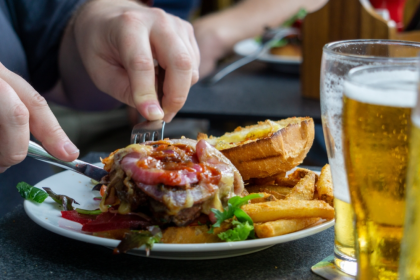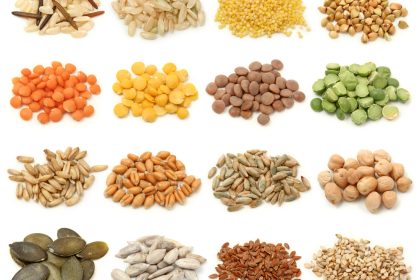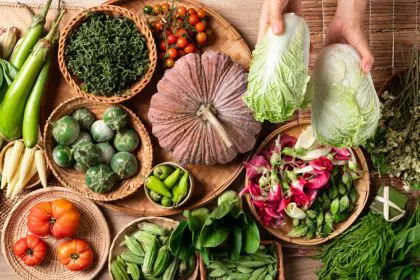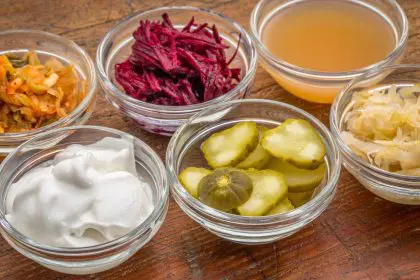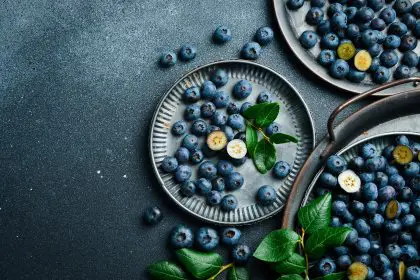You’re doing everything right. Meal prepping on Sundays. Tracking your steps. Swapping chips for foods with “natural” and “healthy” plastered across their packaging. So why isn’t the scale budging? The frustrating truth might be hiding in your snack drawer.
The health food industry has mastered the art of making us feel virtuous while we’re actually loading up on calories, sugar, and processed ingredients. That granola bar you’re munching might be wearing a wellness halo, but underneath, it could be closer to a candy bar than you’d like to admit.
Let’s pull back the curtain on these wolves in nutritious clothing and discover which so-called “healthy” snacks might actually be sabotaging your weight management goals.
Granola and breakfast cereals with health claims
The crunchy clusters marketed as “natural” or “whole grain” often hide a sugary secret. Many commercial granolas pack more sugar per serving than desserts, sometimes containing up to 12 grams of sugar in a tiny half-cup serving that nobody actually sticks to.
The problem gets worse when you check the ingredient list. That “honey” sweetener sounds natural enough, but it’s joined by brown rice syrup, evaporated cane juice, and other fancy names for what’s essentially sugar. Pair that with minimal protein and fiber, and you’ve got a blood sugar roller coaster that leaves you hungrier sooner.
Even cereals flaunting their whole grain content often compensate for reduced sugar by adding extra salt and refined carbohydrates. These quick-digesting carbs spike insulin levels, signaling your body to store fat rather than burn it. The modest sprinkle you actually need looks sadly small compared to the heaping bowls shown in advertisements.
Smoothies and açaí bowls that pack a caloric punch
That vibrant purple smoothie bowl topped with pretty fruit slices and a drizzle of honey is practically made for Instagram. It’s also potentially packing 500-800 calories and over 60 grams of sugar in what feels like a light breakfast or snack.
The problem isn’t the fruit itself but the portions and additions. A typical smoothie shop creation might contain multiple servings of fruit, sweetened yogurt or milk alternatives, sweetened protein powders, and generous drizzles of honey or agave. The result is a sugar bomb that leaves you hungry again within an hour despite its hefty calorie load.
Even when you make smoothies at home, it’s easy to go overboard. Two cups of fruit, a cup of milk, a tablespoon of nut butter, and a squeeze of honey quickly add up. Your blender has essentially transformed a reasonable amount of food into a drinkable form that bypasses much of the satisfaction and fullness cues you’d get from eating those ingredients separately.
Plant-based and vegan processed foods
Just because something is plant-based doesn’t automatically make it weight-friendly. Vegan cookies, meatless burgers, and dairy-free ice creams still need to taste good, which often means adding extra fat, salt, and sugar to compensate for missing animal products.
Many plant-based meat alternatives contain more sodium and similar calories to their animal counterparts, while adding various gums, oils, and processed ingredients to achieve that meat-like texture. The health halo surrounding these products often leads to overconsumption, with people eating larger portions because they perceive the food as healthier.
Even genuinely nutritious vegan staples like nuts can sabotage weight goals when portions go unchecked. That satisfying crunch of cashews delivers approximately 160 calories per ounce, and most people mindlessly munch through servings two to three times that size.
Dried fruit and fruit juices with added benefits
Dried mango marketed as a “superfood” is still essentially nature’s candy. The dehydration process concentrates the sugars while removing the water that would normally help fill you up. A small handful can easily deliver 25 grams of sugar and 120 calories, all while leaving you craving more thanks to their concentrated sweetness.
The “no added sugar” claim on many dried fruits is technically true but misleading. When fruit is dried, its natural sugars become more concentrated, affecting your blood sugar similarly to added sweeteners. The portion distortion is particularly problematic, as three dried apricot halves contain the same calories and sugar as a whole fresh apricot.
Fruit juices fare no better, even those with fancy wellness additions like turmeric or ginger. When you remove the fiber from fruit, you’re left with sugar water that spikes blood glucose without the satiety benefits of whole produce. Those trendy cold-pressed green juices might contain vitamins, but they won’t keep you full for long while still adding calories to your daily intake.
Gluten-free substitutes with health implications
Gluten-free products often compensate for texture and taste by adding extra fat, sugar, and highly refined alternative flours. Unless you have celiac disease or non-celiac gluten sensitivity, these substitutes likely offer no health advantage while potentially expanding your waistline.
A regular cookie and its gluten-free counterpart often have similar calorie counts, but the gluten-free version might contain lower-quality ingredients and less fiber. The belief that “gluten-free means healthy” leads many people to overconsume these products, unaware that they’re nutritionally similar to or worse than what they’re replacing.
The processed starches used in many gluten-free products, such as potato starch and tapioca starch, can cause more dramatic blood sugar spikes than even wheat flour. These refined carbohydrates digest quickly, leaving you hungry again soon after eating while prompting your body to store rather than burn fat.
Protein bars masquerading as health food
That 20-gram protein bar promising post-workout recovery might be hiding 250 calories and as much sugar as a candy bar. Many popular protein bars use sugar alcohols and artificial sweeteners to keep the “net carbs” low while maintaining sweetness, but these can cause digestive issues and potentially increase cravings for sweet foods.
Even high-protein, low-sugar bars often contain highly processed ingredients and palm oils that don’t contribute positively to overall health. The convenient packaging and workout-focused marketing make it easy to view these as necessary for fitness rather than what many of them actually are — glorified candy bars with added protein.
The irony? Research suggests whole food protein sources like eggs, yogurt, or chicken are more effective for muscle recovery and satiety than these processed alternatives. The real power of protein bars lies in their convenience, not their nutritional superiority.
Vegetable chips and “air-popped” snacks
Vegetables are healthy, so vegetable chips must be too, right? Unfortunately, those green spinach chips and purple beet crisps contain more oil and salt than actual vegetable nutrition. The high-temperature cooking process destroys many of the heat-sensitive vitamins, leaving mainly starch, oil, and pretty colors behind.
Even truly air-popped snacks made without oil still contain refined carbohydrates that digest quickly and may increase hunger. The light, crispy texture makes it particularly easy to mindlessly consume far more calories than you realize, especially when marketers push the “guilt-free snacking” angle.
The portion distortion becomes apparent when you compare how much raw vegetable you’d need to make a serving of veggie chips. Three cups of fresh kale cook down to a small handful of kale chips, removing the volume that would normally help fill you up while retaining most of the calories.
The health food aisle isn’t all smoke and mirrors. Genuinely nutritious options exist, but finding them requires looking past flashy packaging and buzzwords. The next time you reach for a snack wearing a wellness halo, flip the package over and check what’s really inside.
Remember, the most effective “health foods” for weight management are usually the ones without any packaging at all. Whole fruits, vegetables, lean proteins, and unprocessed grains don’t need health claims because their benefits are self-evident. They fill you up on fewer calories while delivering the nutrients your body actually needs.
Your snack drawer doesn’t need a complete overhaul, just a more skeptical eye toward marketing claims and a better understanding of what truly supports your goals. Sometimes the healthiest choice is simply enjoying a smaller portion of the real thing rather than a processed alternative pretending to be virtuous.



